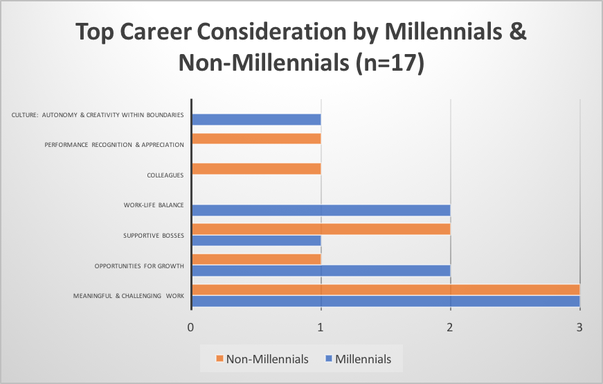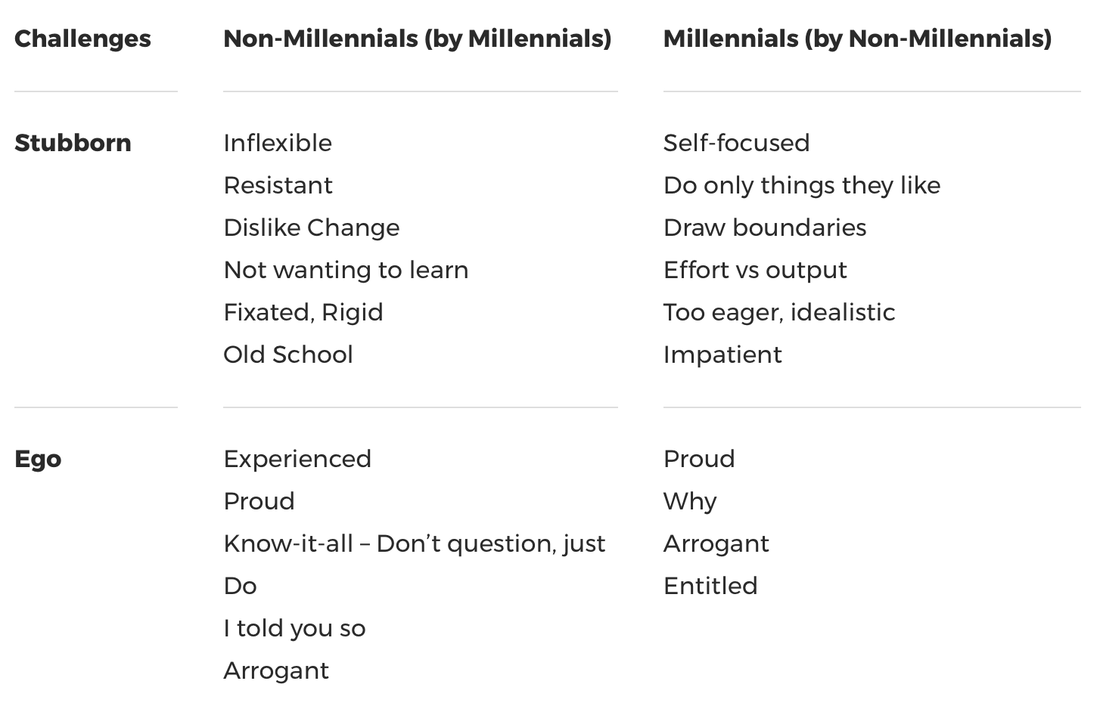|
Organizations have been talking about the new generation of workforce and how to engage them. Plenty of discussions and research are ongoing and we hope to be able to add to the existing repertoire of knowledge. Here are some key insights from Growthbeans Coaching Circle’s session on 26 April 2017. 1. What both parties want: Finding Common Ground Finding common ground and putting aside differences is usually a good start to building better team work. When we focus on the divide between Millennials and Non-Millennials, there is a risk that we might overlook that there are similar things we want. In our discussion, we found that both parties would like the other to:
2. Career Elements that matter From the sample size of 17 people, with 9 millennials and 8 non-millennials, “Meaningful & Challenging work” seems to be the most important element to people, regardless of age. This is followed by opportunities for growth and supportive bosses. Millennials tend to also prefer a culture of autonomy and creativity within boundaries as well as work-life balance, wanting to ensure that they don’t burn-out. Non-millennials may tend to value colleagues and performance recognition more. Note: This may not be representative of the larger population, but it serves as a good reminder that there could be some elements of work that could be important to both the Millennials and Non-Millennials. Another area that requires further thought is that of the way work defines us. The need for work-life balance in Millennials could be related to their desire to explore, create meaning and seek growth opportunities in other areas outside of work. Among non-millennials, the need for performance recognition and appreciation and good colleagues could be due to the amount of time that they spend at work, and the association of their work success with their identity. 3. What we say of each other When polled, ‘Stubborn’ and ‘Ego’ seems to be the two biggest challenges of working with both Millennials and Non-Millennials. For sure, two stubborn parties with an ego does not seem to add up to the start of a great work team. It is interesting that the same word was used to describe both parties. Let us delve deeper into what stubborn means to either side, and reflect on the truth behind these perceptions. To the Millennials, non-millennials appear stubborn when they become fixated on doing things the same way, and being resistant to change and/or learning. Millennials particularly dislike the “Don’t question, just do” approach that may sometimes be adopted by the non-Millennials. To the non-Millennials, millennials appear stubborn when they draw boundaries and focus on doing only things that they like to do, while being impatient to achieve results. Are we really what they describe us to be? When questioned further on what could improve things between both parties, here is what they said that each should consider doing more of: 4. Summary At the end of the session, some of us took away that there could be more heterogeneity within each group than between the two groups. SVP Organizational Development Grace Quek of a top 20 listed company in Singapore also mentioned that it could boil down to the difference in our thinking preferences and communication style. Without understanding the different preferences, and communicating in the way people prefer to be communicated with, it could give rise to potential misunderstandings. Perhaps, that could be another way for us to review the millennial dynamics. You might also be interested in this
0 Comments
Leave a Reply. |
Authorby Shane Yan Shiyan & Shamantha Yan Shiya |










